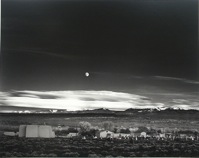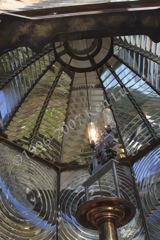To cover a question I get asked time and time again:
None of the photographs on this site have been "manipulated" [or, perhaps a better term would be “edited”] in a way other than what film photographers have been doing for years. Film photographers, through their choices of various cameras and lenses that they used, the brands and types of film & photographic paper (for differing exposures, sensitivities, and grains, and for printing various contrasts, saturations, and color emphasis), the use of filters (on camera and in the darkroom), their processing techniques (including burning and dodging to get differing exposures right in various parts of a photograph) and chemicals, "pushing" exposures, compositing shots with differing focus or focal lengths for effects (such as combining a wide angle with a long lens to give a closer feel to parts of the image while maintaining a wide perspective) and all the many, many other techniques that go clear back to the very first photographic plate ever exposed, have been “manipulating” their photographs. It just took them more time, effort and money. Doing so digitally is not only in the same spirit, but often produces better results far more easily for those skilled at doing so, and is also less far expensive in the long run.
NOTE: Those of you who are not prepared for a soapbox monologue for the rest of this page had best move on... there's nothing more to see here. I've summed it up in that first paragraph. No need to hang around... Move along, please. Ma'am, please take your baby and clear the area... You, sir, in the back, please move right along... Thank you for your cooperation.
Ahem... now, to continue, after I was so rudely interrupted....

While I would never equate myself, nor even class myself, with them, it is my complete belief that Ansel Adams and the other greats of his era and before would wholeheartedly embrace the tools available at present, just as so many others, myself included, have done - they just didn't have them available to use, and they did use what they had to the uttermost limits of the technology available to them at that time. So ask yourself: why would they be any less willing to do so now? After all, it was the final emotion evoked from the photograph that was important to them, not the process that they used to get to that finished state.
Now along comes the digital revolution, and Photoshop® and other programs have substituted for the mechanical techniques used in darkrooms for decades or more, and suddenly, it becomes unthinkable to some people that the photographs might have been "adjusted”. These people somehow believe that the photographs are less real than if they had been taken with film and manipulated with those previously used mechanical techniques to create the very same effects that can now be done digitally
Well, all I can say to that people with that belief is “Bull” with a Capital “B”. I firmly maintain that so long as the photograph has not been altered in such a significant way as to create something that was not there (“edited”, rather than ”adjusted”), and that the photographer is honestly trying to recreate what his eyes saw at the time - as most should know, the eye is far more responsive to a wider range of colors, shades, exposures, and gamuts, all at the same time, than is film or digital (or, for that matter, printed output of any kind) - then he is doing nothing more than photographers have done since the beginning of photography. The only difference with digital adjustment is that it can be done in a fraction of the time and with a fraction of the cost, thereby benefiting both photographer (who can spend more time shooting instead of hunched over in a darkroom) and art lover alike (who benefits from a wider variety available and lower overall cost).

Let me repeat again, I do not “edit” my pictures (although I do occasionally have to clone out a dust spot from the sensor/lens, or a stray piece of trash on the ground that I could not reach to remove prior to the photograph - again, as the greats of photographic history did mechanically with many of their classic, time-honored photographs). I merely use the best tools currently available to me to bring them in line as closely as possible to what my eyes and memory recorded at the time the photograph was taken, just as those greats did. Someday, I might be considered to reach somewhat mediocre (not great) status, but in the meantime, I still have no shame in applying the same concepts to my photographs that they did and do.
It basically boils down to this: Does the photograph please you? If it does, then who cares how it was created (film or digital) or adjusted (darkroom or Photoshop®)?
*“Photograph” here means an image meant to accurately represent a real visual scene as recorded at the time of shutter release, as opposed to an image which might be created partially or wholly outside of reality. While there is nothing wrong with digital images, and indeed many of them are quite strikingly beautiful, the thoughts expressed here are on photographs.
